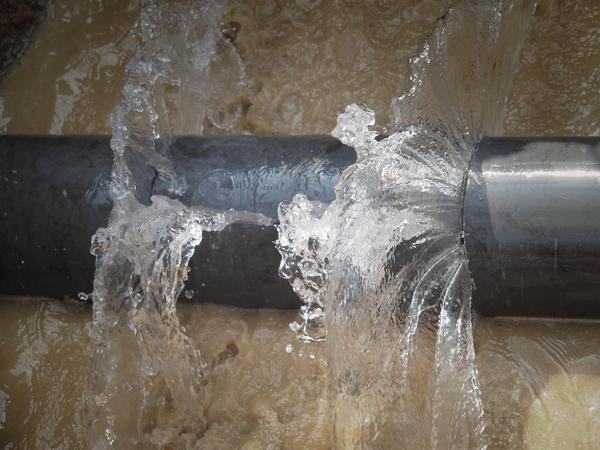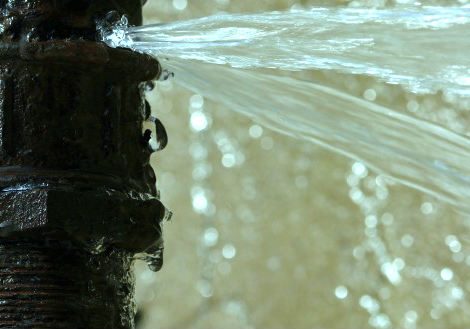Quick-Response Plumbing: Tips for Identifying and also Repairing Burst Pipes
Quick-Response Plumbing: Tips for Identifying and also Repairing Burst Pipes
Blog Article
How do you actually feel when it comes to How to Prepare for Your Dishwasher Installation?

A burst pipeline is a major emergency; you can only stand as you see water you pay dearly to reunite with the planet. In worse situations, you observe a swimming pool on your kitchen area flooring, which is a great trip risk, specifically if you have children around. If the pipe that ruptured remained in your walls, bad news: you might require to paint that entire section.
Exactly how can a catastrophe like a ruptured pipe be stopped and handled? Well, by paying attention to your professional emergency plumbing technicians and also following these guidelines.
Just how do I know when my pipes have ruptured?
Rising and fall water pressures
Pipelines do not simply burst in a day. You may have discovered that your kitchen area faucet or shower doesn't run right away when you transform the tap. It may stop briefly for a couple of secs and then blast you with more pressure than common.
In various other instances, the water may appear regular at first, then drop in stress after a couple of secs.
Contaminated water
Lots of people presume a ruptured pipeline is a one-way electrical outlet. Quite the contrary. As water drains of the hole or laceration in your plumbing system, impurities locate their way in.
Your water may be contaminated from the source, so if you can, inspect if your water storage tank has any kind of troubles. However, if your drinking water is supplied as well as cleansed by the local government, you must call your plumber quickly if you see or smell anything funny in your water.
Puddles under pipes and sinks
When a pipe bursts, the outflow develops a puddle. It may appear that the puddle is growing in size, as well as regardless of the number of times you wipe the puddle, in a few minutes, there's another one waiting to be cleaned. Frequently, you may not be able to trace the puddle to any visible pipelines. This is an indicator to call a specialist plumber.
Damp wall surfaces and also water discolorations
Before a pipe bursts, it will leak, most times. If this persistent leaking goes unnoticed, the leakage might finish right into a large laceration in your pipe. One easy way to avoid this emergency is to keep an eye out for damp wall surfaces advertisement water spots. These water stains will lead you right to the leakage.
Untraceable trickling sounds
Pipe ruptureds can occur in the most undesirable locations, like within concrete, inside walls, or under sinks. When your house goes silent, you may have the ability to listen to an annoyingly relentless leaking noise. Even after you've checked your shower head and also cooking area tap, the dripping might proceed.
Precious reader, the trickling might be coming from a pipe inside your wall surfaces. There isn't much you can do regarding that, except tell a specialist plumber.
Show up the Heat
Establish followers to blow heat into cool spaces. Keep the garage door shut. If you have reduced water circulation, warm the most at risk pipelines (typically in cellars as well as crawl spaces or near exterior wall surfaces) with a hair clothes dryer. Leave the faucet on while you use warm. As you melt ice, the circulation will raise. To avoid pipes from cold, protect your wall surfaces.
Begin Eliminating the Water
Order the wipe, buckets and also a shop vacuum to begin to do away with the water because you absolutely don't desire it soaking right into whatever else in your house. Plus, a fast clean up will certainly decrease the chances of something obtaining moldy.
What do I do when I identify a burst pipeline?
Your water meter will remain to run also while your water wastes. To reduce your losses, locate the primary controls and also turn the supply off. The water pipe are an above-ground structure beside your home.
How to Fix & Detect a Leaking Pipe
How Do I Know if a Pipe is Leaking?
Leak detection tests can help you determine if your pipe has a leak. Even if you don’t see an apparent leak, you should still conduct leak detection tests regularly to save water and money—and prevent major damage to your home.
Water meter. It can be helpful to figure out what your usual water meter usage numbers are and then monitor them regularly. To monitor your meter, first, turn off all water faucets in your home. Check the meter and write down the numbers. In a few hours, check the meter again. If the numbers have changed, you have a leak. Water gauge. Use a water gauge to test your water pressure. Your showerhead should produce a certain amount of water pressure based on its model and design. If the pressure is lower than it is supposed to be for that specific showerhead, your home likely has a leak. Puddles. Look inside your bathroom, laundry, and kitchen sink cabinets. Puddles around the cabinets or around toilets, tubs, showers, and washing machines indicate the presence of a leaking pipe. You may also notice loose tiles, peeling or flaking paint, or mold caused by water accumulation. Napkin test. Even if you don’t see any puddles, you may still have a leak. You can test for water leaks in the bathroom, laundry, and kitchen by wiping below-sink connections with a napkin, paper towel, or piece of toilet paper. If it becomes damp, you probably have a leaking pipe under the sink. Discolored walls. Walls that are discolored—usually with brown or yellow stains—or bulging might mean that they have been impacted by water damage caused by a leaking pipe. Smell. A leaky pipe will create sitting water, and over time, that water may develop a musty smell. If your home smells musty, but you can’t locate the source, it may be due to a leak. Steps for Fixing a Leaking Pipe
A leaky drain can be remedied by tightening the pipe base, replacing the drain seal, caulking the rim, and tightening the pipe nut. Similarly, a leaking toilet pipe can be treated by tightening the packing nut. You may also need to replace the valve. A leaky faucet may just need tightening or replacement of the washers. If that doesn’t work, consider replacing your faucet. If your pipe has a hole in it, you may want to use a pipe leak sealer or pipe leak tape. This quick fix for water pipe leaks can also temporarily fix a copper pipe leak. https://www.ahs.com/home-matters/quick-tips/how-to-tell-if-pipes-are-leaking/

I'm very focused on What to Know Before Installing a Dishwasher and I am assuming you enjoyed the new piece. If you enjoyed our blog entry please do not forget to share it. Many thanks for your time. Please check up our site back soon.
Book Maintenance
Report this page